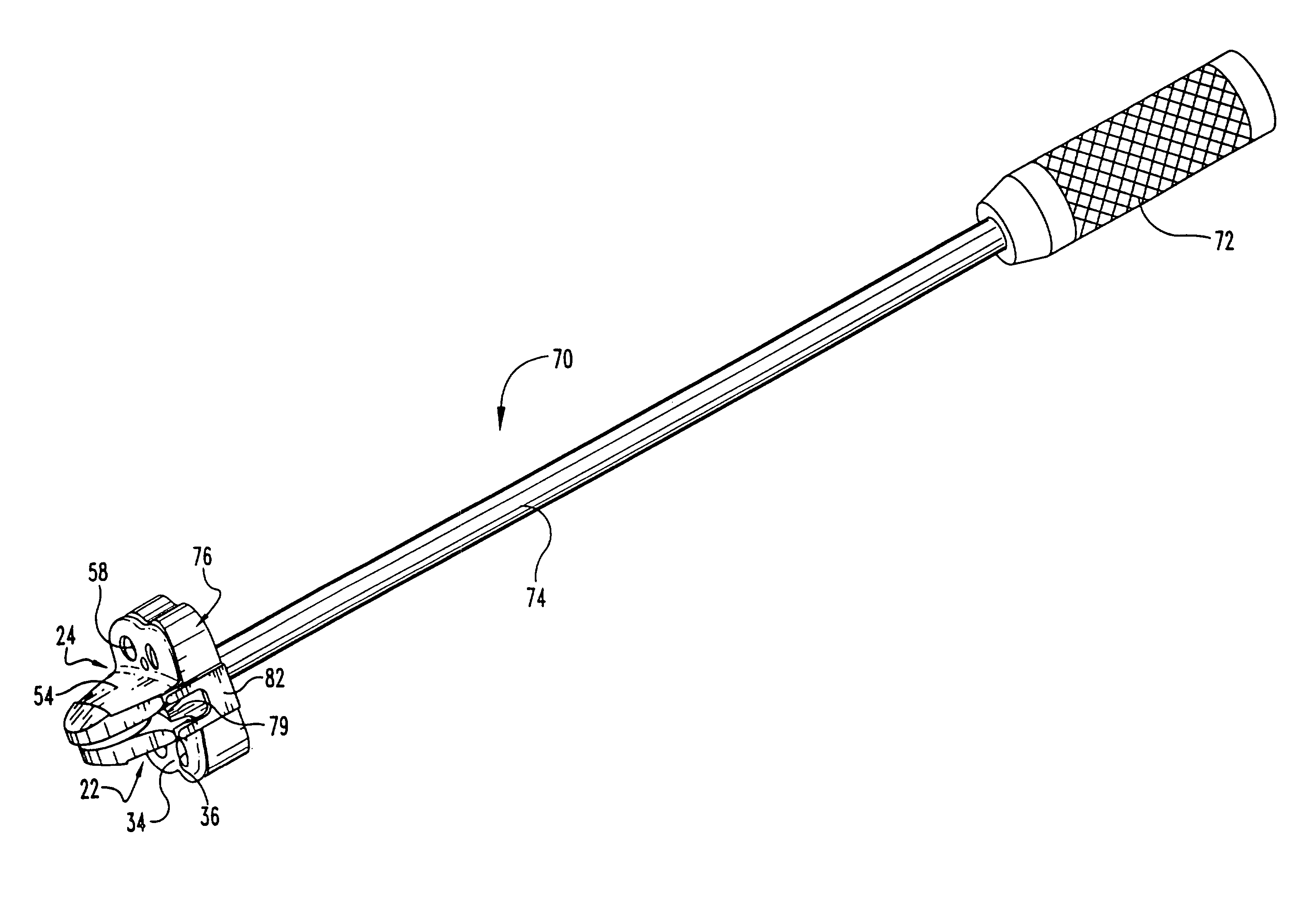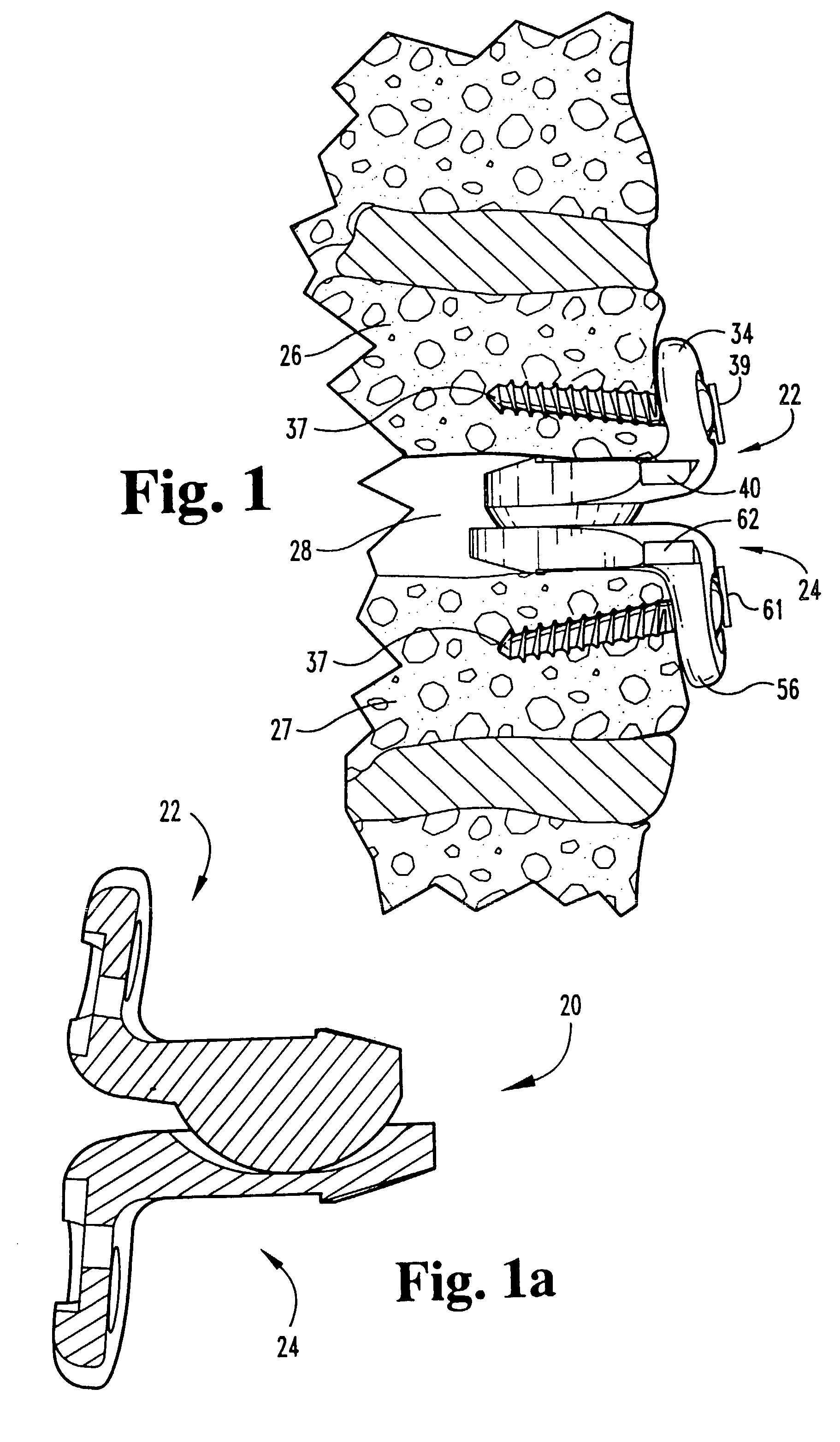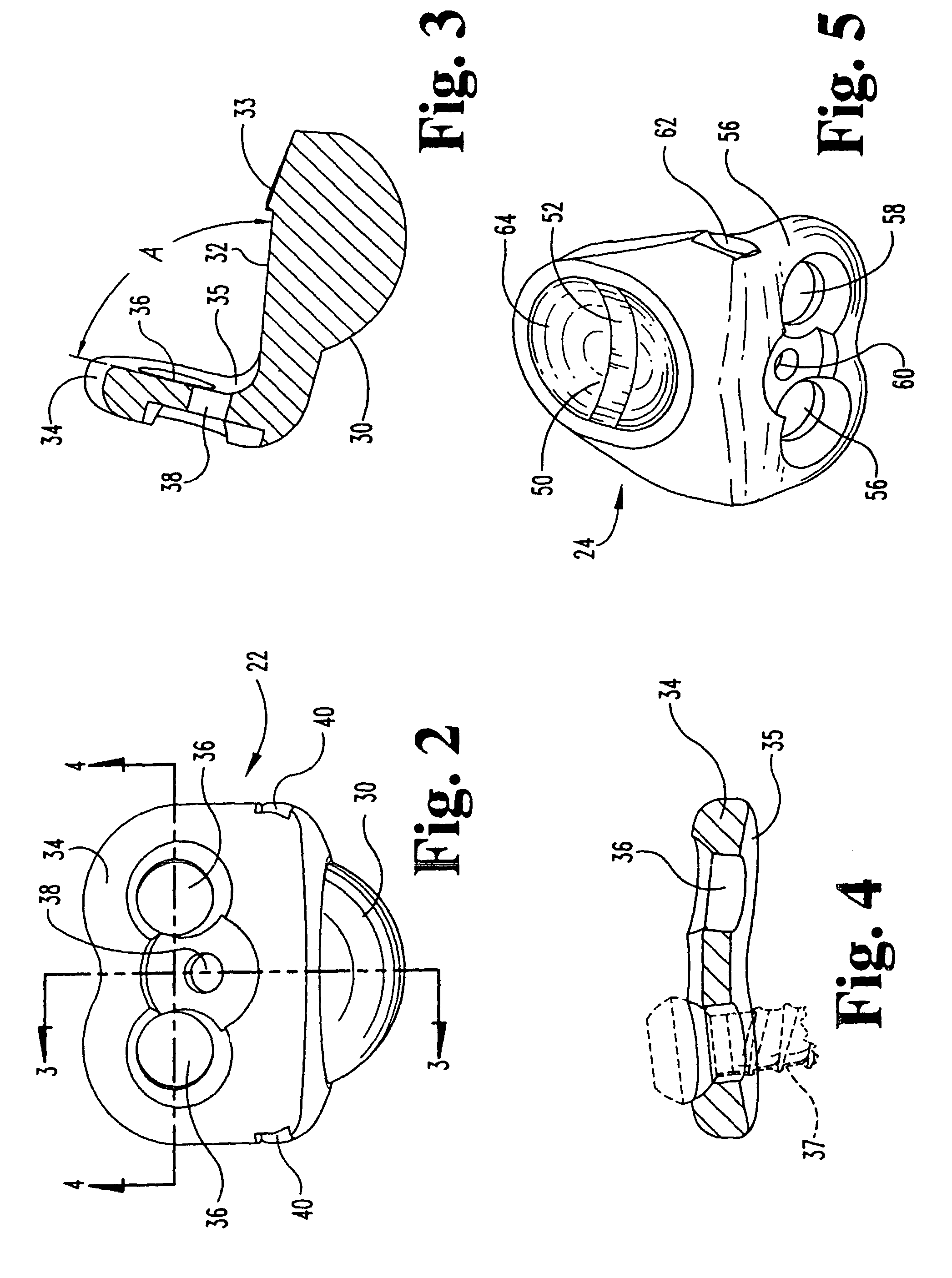Artificial intervertebral joint permitting translational and rotational motion
a technology of intervertebral joints and prostheses, applied in the field of intervertebral joint prosthesis, can solve the problems of increasing the stress on adjacent spinal motion segments, affecting the quality of life of patients, and predisposing neighboring spinal motion segments to rapid deterioration, so as to reduce or eliminate the need for in vivo adjustment, the effect of low profil
- Summary
- Abstract
- Description
- Claims
- Application Information
AI Technical Summary
Benefits of technology
Problems solved by technology
Method used
Image
Examples
Embodiment Construction
[0037]For the purposes of promoting an understanding of the principles of the invention, reference will now be made to the embodiment illustrated in the drawings and specific language will be used to describe the same. It will nevertheless be understood that no limitation of the scope of the invention is thereby intended, such alterations and further modifications in the illustrated device, and such further applications of the principles of the invention as illustrated therein, being contemplated as would normally occur to one skilled in the art to which the invention relates.
[0038]Referring generally to FIGS. 1-12, there is shown one embodiment of the intervertebral joint prosthesis 20 of the present invention. Prosthesis 20 includes a ball component 22 and a trough component 24 that are interengagable to form prosthesis 20. In an intervertebral disc space 28 between two adjacent vertebrae 26, 27, ball component 22 is fixed to one of the adjacent vertebrae (e.g. vertebra 26 in FIG....
PUM
 Login to View More
Login to View More Abstract
Description
Claims
Application Information
 Login to View More
Login to View More - R&D
- Intellectual Property
- Life Sciences
- Materials
- Tech Scout
- Unparalleled Data Quality
- Higher Quality Content
- 60% Fewer Hallucinations
Browse by: Latest US Patents, China's latest patents, Technical Efficacy Thesaurus, Application Domain, Technology Topic, Popular Technical Reports.
© 2025 PatSnap. All rights reserved.Legal|Privacy policy|Modern Slavery Act Transparency Statement|Sitemap|About US| Contact US: help@patsnap.com



